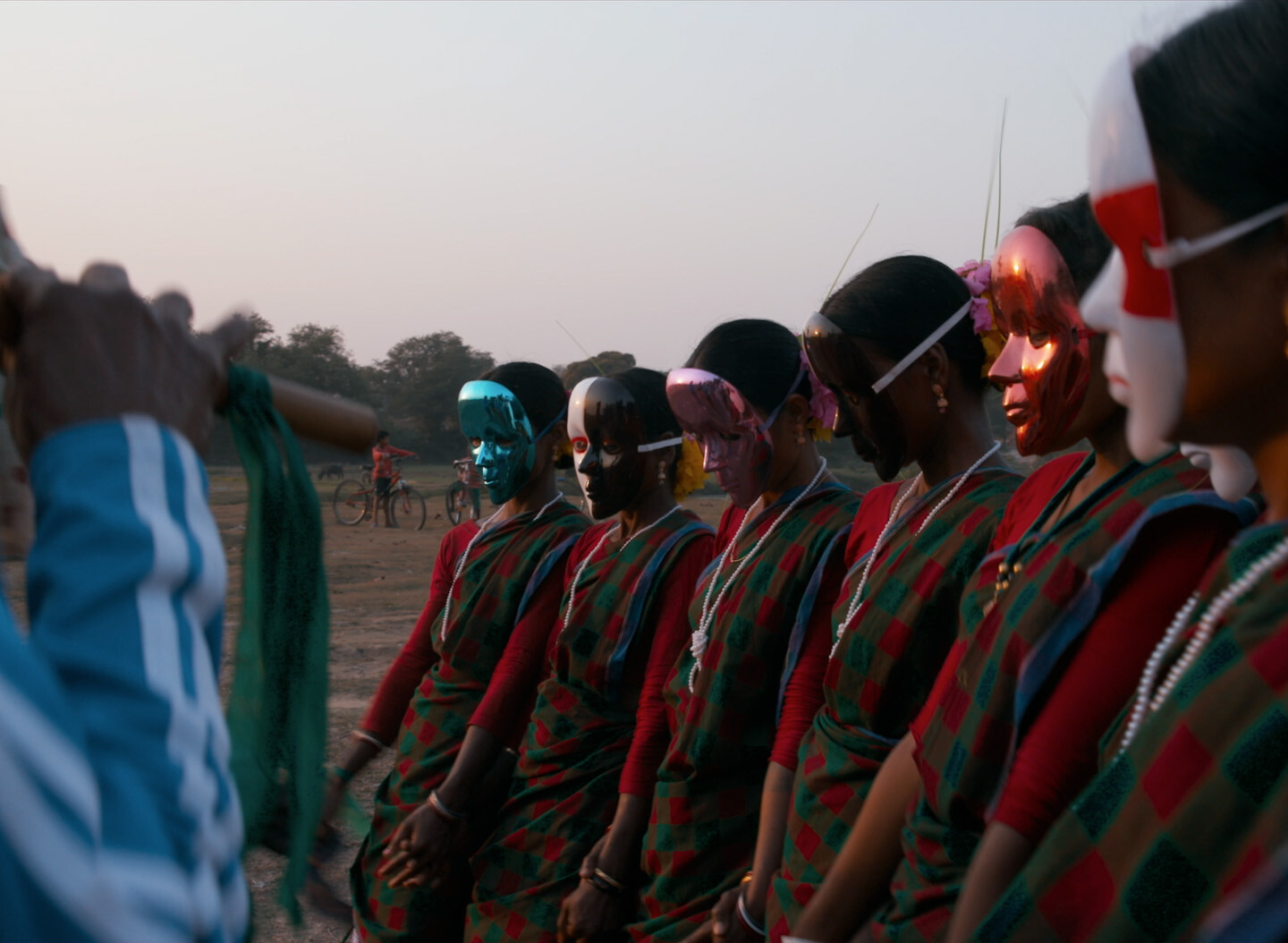O Horizon
June 23–October 2, 2022
Curated by Manuel Cirauqui.
Since 2002, The Otolith Group has produced films, audio works, installations, exhibitions and texts, all informed by extensive research, decolonial thinking and transcultural friendship. Borrowing their name from a small apparatus within the inner ear of vertebrate animals—a sensitive structure by which bodies orientate, balance, recognize acceleration and position—the artists allegorically mark their intention to operate on multiple dimensions simultaneously. The Otolith Group’s work bridges geographies, generations, and historical strata, and nurtures speculative versions of the present that combine perspectives in science fiction, critical theory and exercises in hypothetical autobiography. Suffused with poetic resonances, their art illuminates fragments of histories yet to be written; it forces an archeological closeness with futurity, with that which remains unresolved and half-erased from the past.
At the center of this exhibition is the film installation O Horizon, a major work depicting the Visva Bharati school in Santiniketan, West Bengal, founded by Nobel laureate, writer, educator, social reformist and polymath Rabindranath Tagore in 1921. In guiding modern India toward cultural independence and transformation, Tagore anticipated some of the key issues of our global present: the pressing necessity for humans to rewrite their planetary relations in non-extractive terms; the threats of national chauvinism and religious extremism; the crucial role of intergenerational transmission in any society. The Otolith Group weighs the enduring presence of Tagore’s vision through its exploration of present-day Santiniketan. The film is introduced by the poem The Year 1400, written in 1896, in which Tagore addresses his readers in the future about the coming of the spring. In his longing to communicate with subsequent generations through words, the poet traces a connection between his environment, the climate and biodiversity of his time, and those of the future. One of the opening impulses in O Horizon is to stage an encounter in which the viewer responds to the transtemporal poetics of Tagore’s inquiry into what might be sent back from the future.
O Horizon’s itinerary through the Visva Bharati campus elides the terms of documentary at its most lyrical, discursive and operatic. The camera guides us through dances, rehearsals and rituals; indoor and outdoor classes; microphones record the mystical songs of Kabir, epic poetry; conversations and plays; lenses capture animal gazes and vegetal depths in silence. Poetic recitation and performance alternate with observations of the flora, scholarly dialogues, and panoramic perspectives. Murals and public sculptures, emblems and allegories of Santiniketan’s aesthetic modernity, are observed in detail, while digital screens and mobile phone apps reappear as props, gadgets and companions in the daily routines and stylized rituals of campus life.
Tagore’s environmental vision was key to his foundation of Visva Bharati as a place of confluence for arts and crafts in connection with a pedagogy of the Earth. Culture and agriculture converge in Tagore’s efforts to reinvigorate the land by bringing fertile soil from nearby areas, thereby reintroducing multiple species of plants and “terraforming” Santiniketan into the fertile terrain it became years later. A crucial stage in this transformation emerges at the uppermost layer of soil in which the decomposition and transformation of leaves, grass, fruit, and animal debris form the surface layer agronomists name the “O Horizon” from which the entire film project takes its title. The Otolith Group considers the poetic and political underpinnings of such a fragile and dynamic space as a crucial element for Tagore’s ethos which continues to inform a contemporary thought that is both ecologic and cosmopolitical.
Extensions of this thinking become visible through a series of photomontages titled Santiniketan Studies, a selection of which is presented by the exhibition entrance. These pictures present the multiple dimensions of various enclaves in the campus in which multiple time periods coexist with the latency of historical events to evoke the emotional texture of every site. Trees are recurring motifs throughout, enduring presences at the center of an outdoor circle in the characteristic “tree schools” of Tagore’s system, as manifestations of the regenerative agronomy practiced at Santiniketan since its inception. Also exhibited in this space is a selection of works on paper by the artist Vidya Sagar (1938–2016), father of Anjalika Sagar, and collaborator in various films by The Otolith Group, to whom O Horizon is dedicated. Sagar’s work is exemplary of Santiniketan’s influence on various generations of artists in modern and contemporary India. Sagar’s Tantric abstractions use sensuous outlines and delicate pastel hues to generate moments of visual musicality that reinterpret the patterns of contextual Indian iconographies resonating throughout the allusive poetics of O Horizon.



